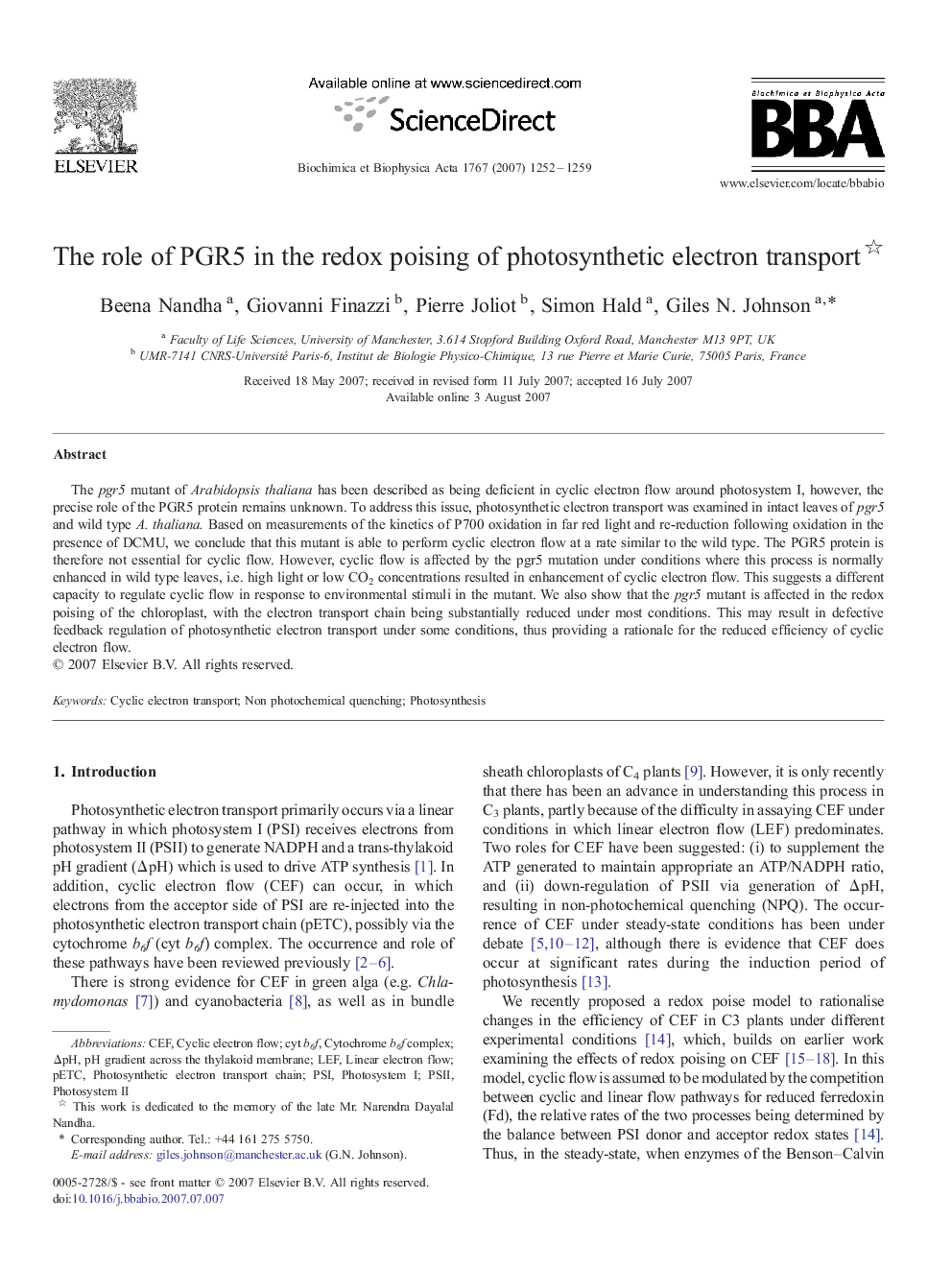| Article ID | Journal | Published Year | Pages | File Type |
|---|---|---|---|---|
| 1943452 | Biochimica et Biophysica Acta (BBA) - Bioenergetics | 2007 | 8 Pages |
The pgr5 mutant of Arabidopsis thaliana has been described as being deficient in cyclic electron flow around photosystem I, however, the precise role of the PGR5 protein remains unknown. To address this issue, photosynthetic electron transport was examined in intact leaves of pgr5 and wild type A. thaliana. Based on measurements of the kinetics of P700 oxidation in far red light and re-reduction following oxidation in the presence of DCMU, we conclude that this mutant is able to perform cyclic electron flow at a rate similar to the wild type. The PGR5 protein is therefore not essential for cyclic flow. However, cyclic flow is affected by the pgr5 mutation under conditions where this process is normally enhanced in wild type leaves, i.e. high light or low CO2 concentrations resulted in enhancement of cyclic electron flow. This suggests a different capacity to regulate cyclic flow in response to environmental stimuli in the mutant. We also show that the pgr5 mutant is affected in the redox poising of the chloroplast, with the electron transport chain being substantially reduced under most conditions. This may result in defective feedback regulation of photosynthetic electron transport under some conditions, thus providing a rationale for the reduced efficiency of cyclic electron flow.
